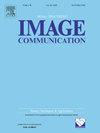Toward a blind quality assessment for underwater images
IF 2.7
3区 工程技术
Q2 ENGINEERING, ELECTRICAL & ELECTRONIC
引用次数: 0
Abstract
Underwater images quality assessment (IQA) plays a vital role for some image-based applications. However, existing specific no-reference underwater IQA metrics mainly concentrate on considering visual quality-related features, such as colorfulness, sharpness and contrast, which are insufficient to characterize the image quality comprehensively, resulting in an unsatisfactory prediction performance and limited generalization capability. In this paper, we present a new blind multiple features evaluation metric (MFEM) by extracting five types of features to quantify underwater image quality, including color, sharpness, luminance, structure and texture. Specifically, we combine the colorfulness, color difference and color saturation to represent color features. The sharpness feature is generated by incorporating a saliency map into the sharpness measure. Moreover, based on the natural scene statistics (NSS) regularity, we utilize the NSS features acquired from the illuminance map to characterize the luminance change of distorted underwater image. In addition, the structure and texture features are calculated by employing the gradient-based local binary pattern operator and gray-level co-occurrence matrix, respectively. After that, the Gaussian process regression is exploited for training the prediction model from the extracted features to subjective opinion score. Also, to verify the generalization ability of the existing IQA metrics, we establish a real-world underwater IQA dataset with subjective scores. Extensive experiments conducted on public benchmark datasets and our constructed dataset both demonstrate that our proposed MFEM achieves better prediction performance comparing with several state-of-the-art IQA metrics. The code and dataset are available at: https://github.com/Hou-Guojia/MFEM.
水下图像质量盲评价方法研究
水下图像质量评估(IQA)在一些基于图像的应用中起着至关重要的作用。然而,现有具体的无参考水下IQA指标主要集中考虑与视觉质量相关的特征,如色彩、清晰度、对比度等,不足以全面表征图像质量,导致预测性能不理想,泛化能力有限。本文通过提取水下图像的颜色、清晰度、亮度、结构和纹理等5类特征,提出了一种新的盲多特征评价度量(MFEM)。具体来说,我们结合色彩度、色差和色彩饱和度来表示色彩特征。锐度特征是通过将显着性图合并到锐度测量中生成的。此外,基于自然场景统计(NSS)规律,利用从照度图中获取的NSS特征来表征失真水下图像的亮度变化。此外,采用基于梯度的局部二值模式算子和灰度共生矩阵分别计算图像的结构和纹理特征。然后,利用高斯过程回归将提取的特征训练为主观意见评分的预测模型。此外,为了验证现有IQA指标的泛化能力,我们建立了一个具有主观评分的真实水下IQA数据集。在公共基准数据集和我们构建的数据集上进行的大量实验都表明,与几种最先进的IQA指标相比,我们提出的MFEM具有更好的预测性能。代码和数据集可从https://github.com/Hou-Guojia/MFEM获得。
本文章由计算机程序翻译,如有差异,请以英文原文为准。
求助全文
约1分钟内获得全文
求助全文
来源期刊

Signal Processing-Image Communication
工程技术-工程:电子与电气
CiteScore
8.40
自引率
2.90%
发文量
138
审稿时长
5.2 months
期刊介绍:
Signal Processing: Image Communication is an international journal for the development of the theory and practice of image communication. Its primary objectives are the following:
To present a forum for the advancement of theory and practice of image communication.
To stimulate cross-fertilization between areas similar in nature which have traditionally been separated, for example, various aspects of visual communications and information systems.
To contribute to a rapid information exchange between the industrial and academic environments.
The editorial policy and the technical content of the journal are the responsibility of the Editor-in-Chief, the Area Editors and the Advisory Editors. The Journal is self-supporting from subscription income and contains a minimum amount of advertisements. Advertisements are subject to the prior approval of the Editor-in-Chief. The journal welcomes contributions from every country in the world.
Signal Processing: Image Communication publishes articles relating to aspects of the design, implementation and use of image communication systems. The journal features original research work, tutorial and review articles, and accounts of practical developments.
Subjects of interest include image/video coding, 3D video representations and compression, 3D graphics and animation compression, HDTV and 3DTV systems, video adaptation, video over IP, peer-to-peer video networking, interactive visual communication, multi-user video conferencing, wireless video broadcasting and communication, visual surveillance, 2D and 3D image/video quality measures, pre/post processing, video restoration and super-resolution, multi-camera video analysis, motion analysis, content-based image/video indexing and retrieval, face and gesture processing, video synthesis, 2D and 3D image/video acquisition and display technologies, architectures for image/video processing and communication.
 求助内容:
求助内容: 应助结果提醒方式:
应助结果提醒方式:


